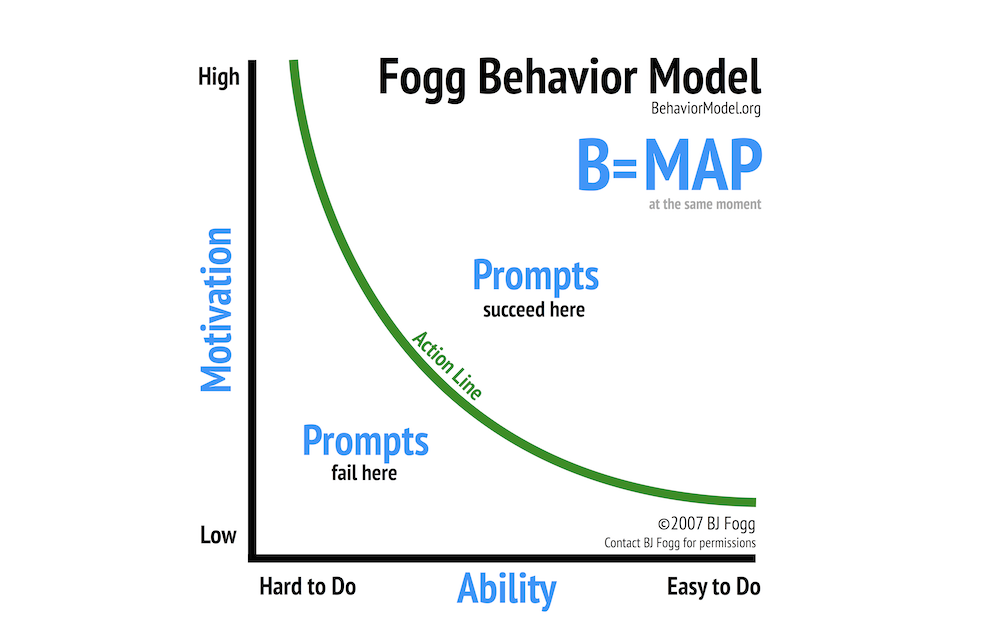Fogg Behavior Model
What Causes Behavior Change?
The Fogg Behavior Model shows that three elements must converge at the same moment for a behavior to occur: Motivation, Ability, and a Prompt. When a behavior does not occur, at least one of those three elements is missing.

The Fogg Behavior Model (FBM) makes it easier to understand behavior in general. What was once a fuzzy mass of psychological theories now becomes organized and specific when viewed through the FBM.
The FBM highlights three principal elements, each of which has subcomponents. Specifically, the FBM outlines Core Motivators (Motivation), Simplicity Factors (Ability), and the types of Prompts. The subcomponents define the larger elements. For example, in the FBM the word Ability refers to the how the Simplicity Factors work together in the context of a Prompt.
Many other people have proposed ways to understand persuasion and behavior change, dating back to Aristotle in ancient Greece. What makes the FBM different from previous work? First, the FBM shows how behavior is the result of three specific elements coming together at one moment. Next, the FBM explains the subcomponents of each element. In addition, the FBM shows that Motivation and Ability can be traded off (e.g., if motivation is very high, ability can be low). In other words, Motivation and Ability have a compensatory relationship to each other. Finally, the FBM applies most directly to practical issues of designing for behavior change.
Behavior Model Paper: A Behavior Model for Persuasive Design (2009)
This paper presents a new model for understanding human behavior. In this model (FBM), behavior is a product of three factors: motivation, ability, and triggers, each of which has subcomponents. The FBM is useful in analysis and design of persuasive technologies.